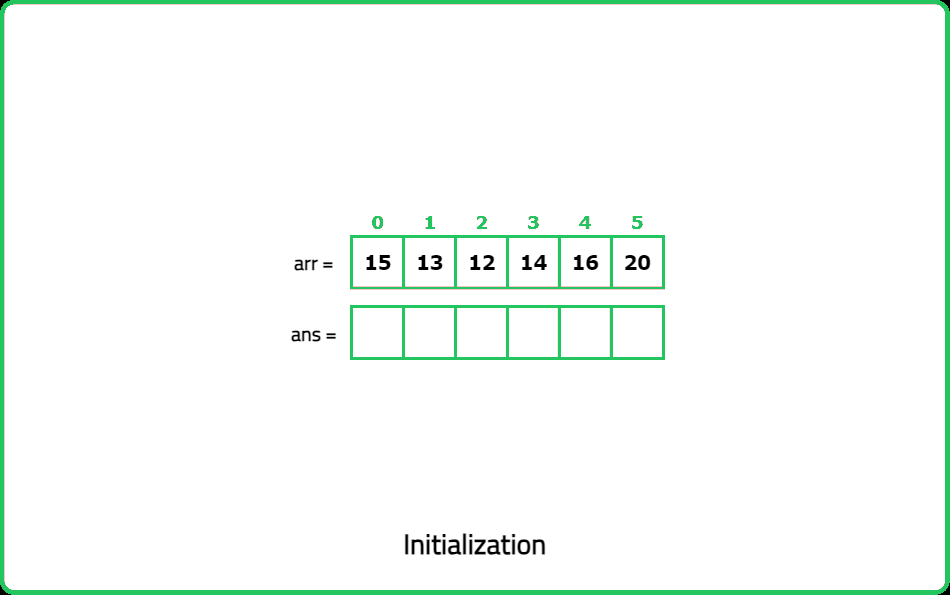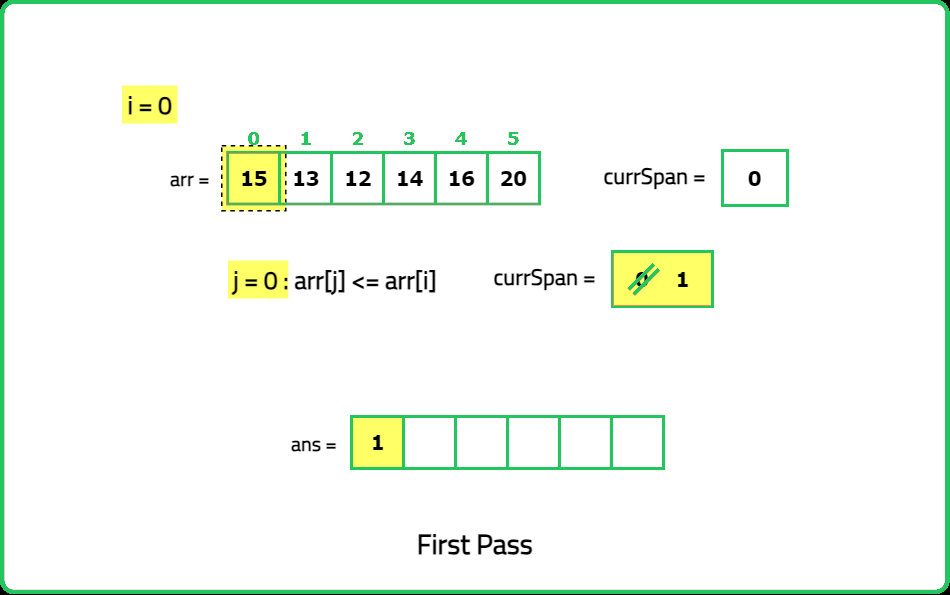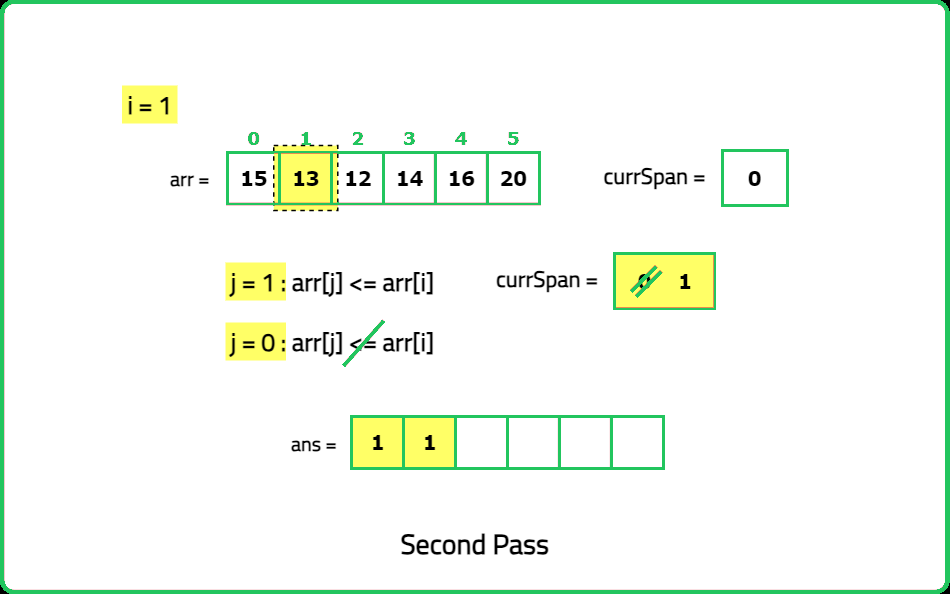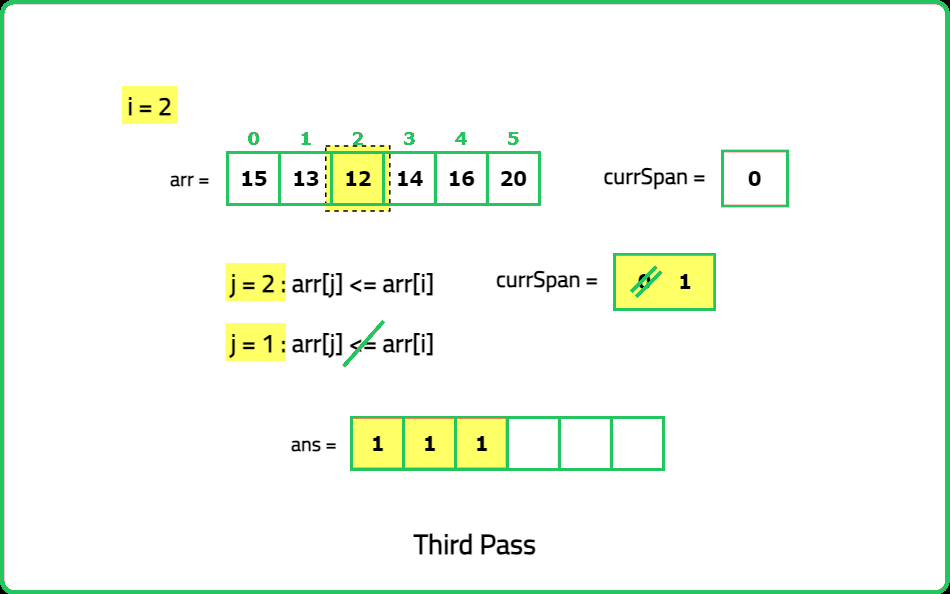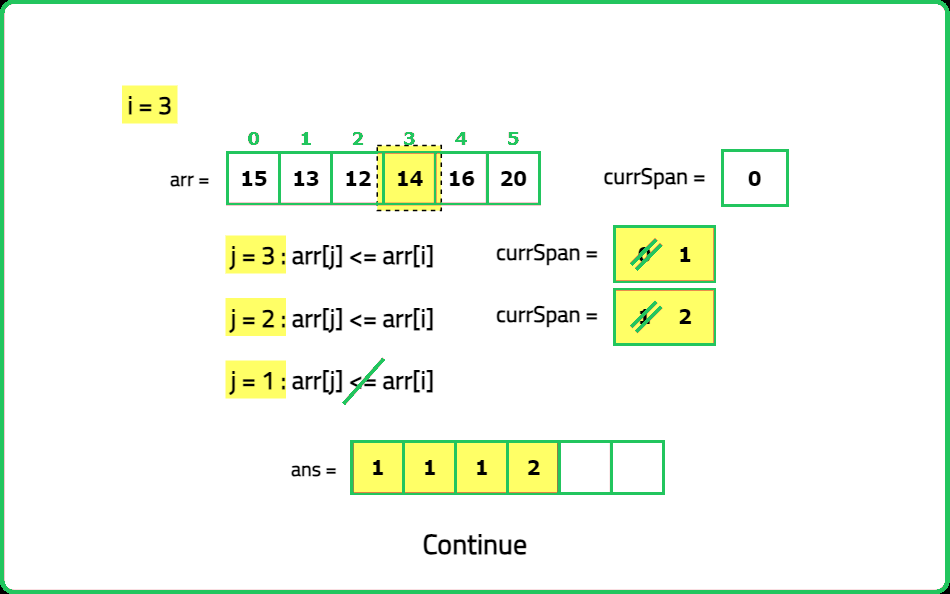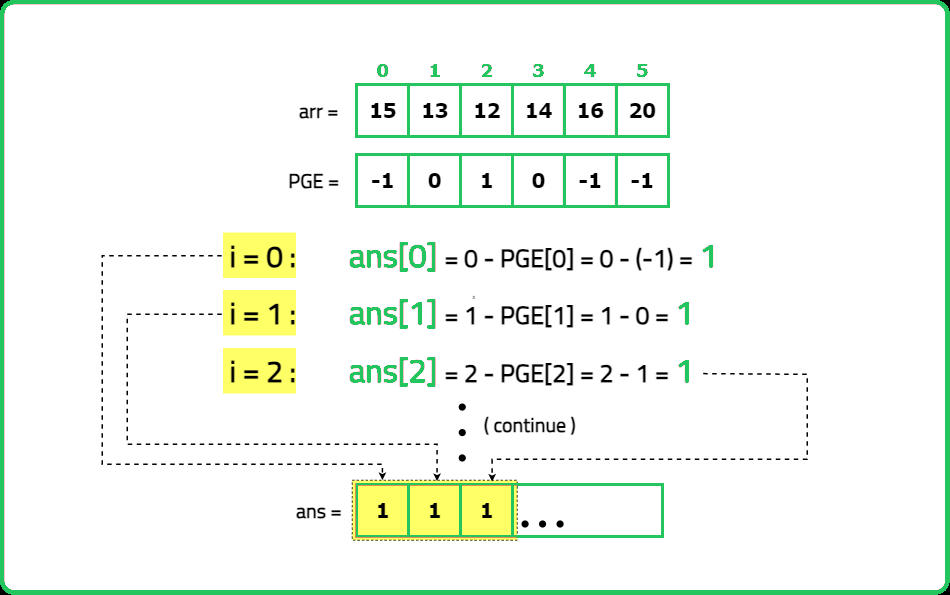123456789101112131415161718192021222324252627282930313233343536373839404142434445464748495051525354555657585960616263646566676869707172737475767778798081828384858687
#include <bits/stdc++.h>
using namespace std;
class Solution {
private:
/* Function to find the indices of previous
greater element for each element in the array */
vector<int> findPGE(vector<int> arr) {
int n = arr.size(); //size of array
// To store the previous greater elements
vector<int> ans(n);
// Stack to get elements in LIFO fashion
stack<int> st;
// Start traversing from the front
for(int i=0; i < n; i++) {
// Get the current element
int currEle = arr[i];
/* Pop the elements in the stack until
the stack is not empty and the top
element is not the greater element */
while(!st.empty() && arr[st.top()] <= currEle) {
st.pop();
}
/* If the greater element is not
found, stack will be empty */
if(st.empty())
ans[i] = -1;
// Else store the answer
else
ans[i] = st.top();
// Push the current index in the stack
st.push(i);
}
// Return the result
return ans;
}
public:
// Function to find the span of stock prices for each day
vector <int> stockSpan(vector<int> arr, int n) {
// Get the indices of previous greater elements
vector<int> PGE = findPGE(arr);
// To store the answer
vector<int> ans(n);
// Compute the result
for(int i=0; i < n; i++) {
ans[i] = i - PGE[i];
}
// Return the result
return ans;
}
};
int main() {
int n = 7;
vector<int> arr = {120, 100, 60, 80, 90, 110, 115};
/* Creating an instance of
Solution class */
Solution sol;
/* Function call to find the span
of stock prices for each day */
vector<int> ans = sol.stockSpan(arr, n);
cout << "The span of stock prices is: ";
for(int i=0; i < n; i++) {
cout << ans[i] << " ";
}
return 0;
}
12345678910111213141516171819202122232425262728293031323334353637383940414243444546474849505152535455565758596061626364656667686970717273747576777879808182
import java.util.*;
class Solution {
/* Function to find the indices of previous
greater element for each element in the array */
private int[] findPGE(int[] arr) {
int n = arr.length; //size of array
// To store the previous greater elements
int[] ans = new int[n];
// Stack to get elements in LIFO fashion
Stack<Integer> st = new Stack<>();
// Start traversing from the front
for(int i = 0; i < n; i++) {
// Get the current element
int currEle = arr[i];
/* Pop the elements in the stack until
the stack is not empty and the top
element is not the greater element */
while(!st.isEmpty() && arr[st.peek()] <= currEle) {
st.pop();
}
/* If the greater element is not
found, stack will be empty */
if(st.isEmpty())
ans[i] = -1;
// Else store the answer
else
ans[i] = st.peek();
// Push the current index in the stack
st.push(i);
}
// Return the result
return ans;
}
// Function to find the span of stock prices for each day
public int[] stockSpan(int[] arr, int n) {
// Get the indices of previous greater elements
int[] PGE = findPGE(arr);
// To store the answer
int[] ans = new int[n];
// Compute the result
for(int i = 0; i < n; i++) {
ans[i] = i - PGE[i];
}
// Return the result
return ans;
}
public static void main(String[] args) {
int n = 7;
int[] arr = {120, 100, 60, 80, 90, 110, 115};
/* Creating an instance of
Solution class */
Solution sol = new Solution();
/* Function call to find the span
of stock prices for each day */
int[] ans = sol.stockSpan(arr, n);
System.out.print("The span of stock prices is: ");
for(int i = 0; i < n; i++) {
System.out.print(ans[i] + " ");
}
}
}
1234567891011121314151617181920212223242526272829303132333435363738394041424344454647484950515253545556575859606162636465666768697071
class Solution:
# Function to find the indices of previous
# greater element for each element in the array
def findPGE(self, arr):
n = len(arr) # size of array
# To store the previous greater elements
ans = [0] * n
# Stack to get elements in LIFO fashion
st = []
# Start traversing from the front
for i in range(n):
# Get the current element
currEle = arr[i]
# Pop the elements in the stack until
# the stack is not empty and the top
# element is not the greater element
while st and arr[st[-1]] <= currEle:
st.pop()
# If the greater element is not
# found, stack will be empty
if not st:
ans[i] = -1
# Else store the answer
else:
ans[i] = st[-1]
# Push the current index in the stack
st.append(i)
# Return the result
return ans
# Function to find the span of stock prices for each day
def stockSpan(self, arr, n):
# Get the indices of previous greater elements
PGE = self.findPGE(arr)
# To store the answer
ans = [0] * n
# Compute the result
for i in range(n):
ans[i] = i - PGE[i]
# Return the result
return ans
# Main code
if __name__ == "__main__":
n = 7
arr = [120, 100, 60, 80, 90, 110, 115]
# Creating an instance of Solution class
sol = Solution()
# Function call to find the span of stock prices for each day
ans = sol.stockSpan(arr, n)
print("The span of stock prices is:", end=" ")
for span in ans:
print(span, end=" ")
12345678910111213141516171819202122232425262728293031323334353637383940414243444546474849505152535455565758596061626364656667686970717273747576
class Solution {
/* Function to find the indices of previous
greater element for each element in the array */
findPGE(arr) {
const n = arr.length; // size of array
// To store the previous greater elements
const ans = new Array(n).fill(0);
// Stack to get elements in LIFO fashion
const st = [];
// Start traversing from the front
for (let i = 0; i < n; i++) {
// Get the current element
const currEle = arr[i];
/* Pop the elements in the stack until
the stack is not empty and the top
element is not the greater element */
while (st.length && arr[st[st.length - 1]] <= currEle) {
st.pop();
}
/* If the greater element is not
found, stack will be empty */
if (st.length === 0)
ans[i] = -1;
// Else store the answer
else
ans[i] = st[st.length - 1];
// Push the current index in the stack
st.push(i);
}
// Return the result
return ans;
}
// Function to find the span of stock prices for each day
stockSpan(arr, n) {
// Get the indices of previous greater elements
const PGE = this.findPGE(arr);
// To store the answer
const ans = new Array(n).fill(0);
// Compute the result
for (let i = 0; i < n; i++) {
ans[i] = i - PGE[i];
}
// Return the result
return ans;
}
}
// Main code
const n = 7;
const arr = [120, 100, 60, 80, 90, 110, 115];
/* Creating an instance of
Solution class */
const sol = new Solution();
/* Function call to find the span
of stock prices for each day */
const ans = sol.stockSpan(arr, n);
console.log("The span of stock prices is:", ans.join(" "));
